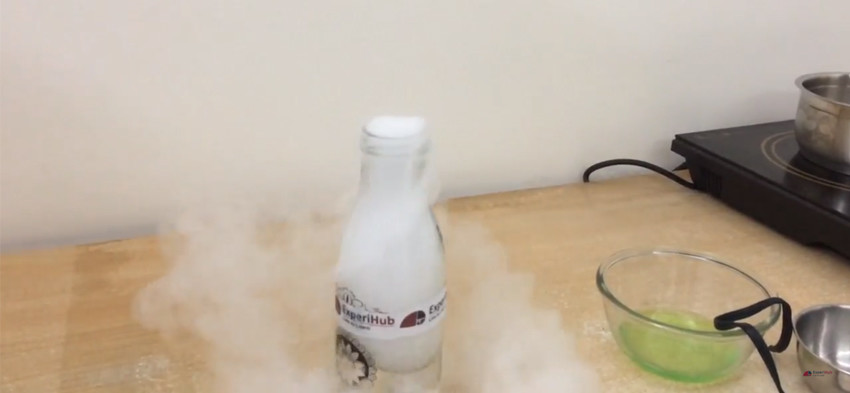A well-known chemistry experiment is done by placing an egg (raw or boiled) into a container filled with Vinegar. After a few days, something exciting is observed: the egg becomes rubbery and bouncy. The eggshell is formed by calcium carbonate (CaCO3), a salt in limestone, plaster, marble, chalk,…
Non-metallic oxides are formed by the reaction of non-metals with oxygen. They react with a base to give salts and water. 0
Sublimation is the transition of a substance directly from the solid to the gas state, without passing through the liquid state. Sublimation is an endothermic process that occurs at temperatures and pressures below a substance’s triple point in its phase diagram, which corresponds to the lowest pressure at which the…
Elephant’s toothpaste is a foamy substance caused by the rapid decomposition of hydrogen peroxide using potassium iodide or yeast and warm water as a catalyst. How rapidly the reaction proceeds will depend on the concentration of hydrogen peroxide. Because it requires only a small number of ingredients and makes…
Sublimation is the transition of a substance directly from the solid to the gas state, without passing through the liquid state. Sublimation is an endothermic process that occurs at temperatures and pressures below a substance’s triple point in its phase diagram, which corresponds to the lowest pressure at…
Chemical Reactions are all around us. Whether it is the light from the sun or the cars that we see each day, we are surrounded by these reactions in our everyday life. Chemical Reactions, in the simplest of terms, refer to those reactions in which the bonds are immediately broken…
Conversion of Solid to Gas Sublimation 0







